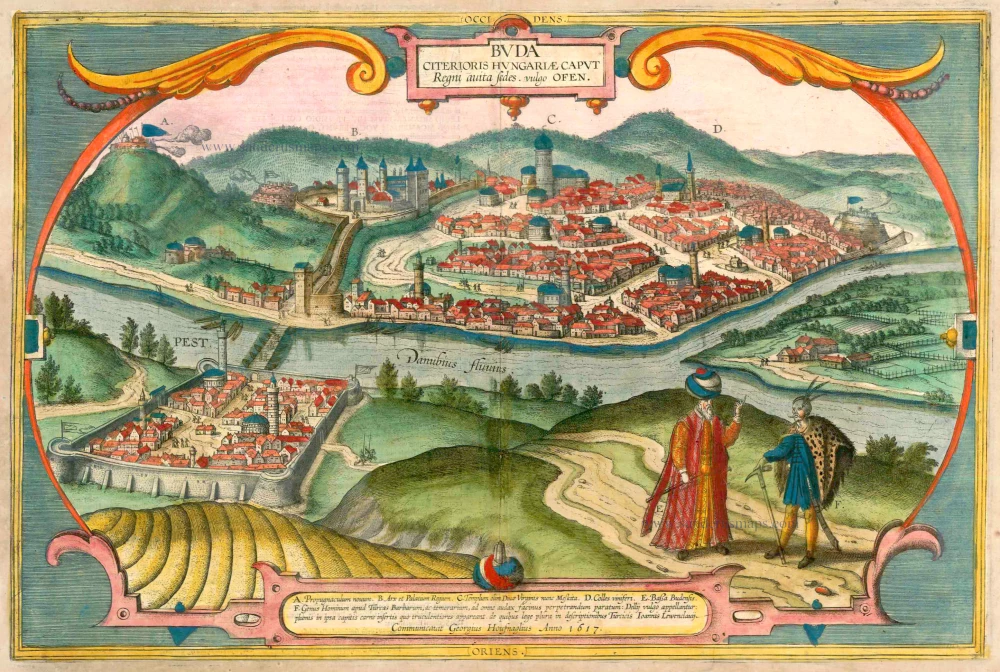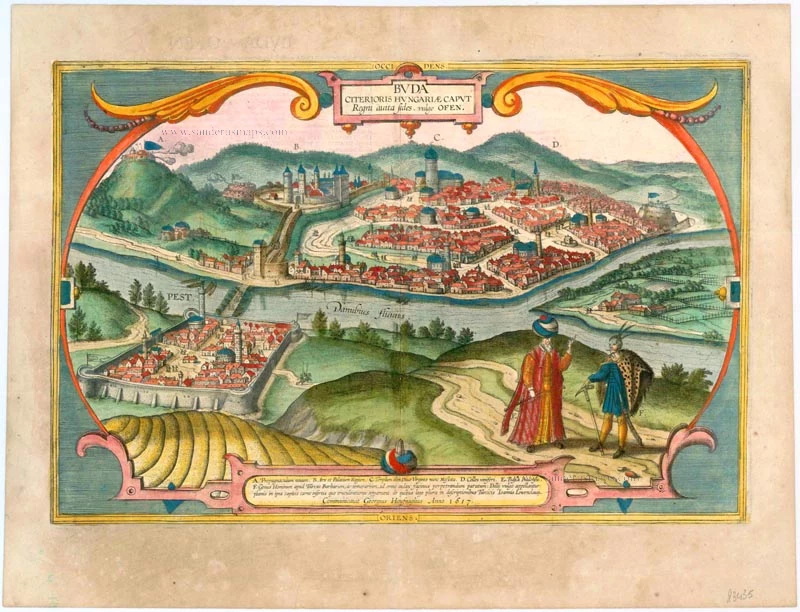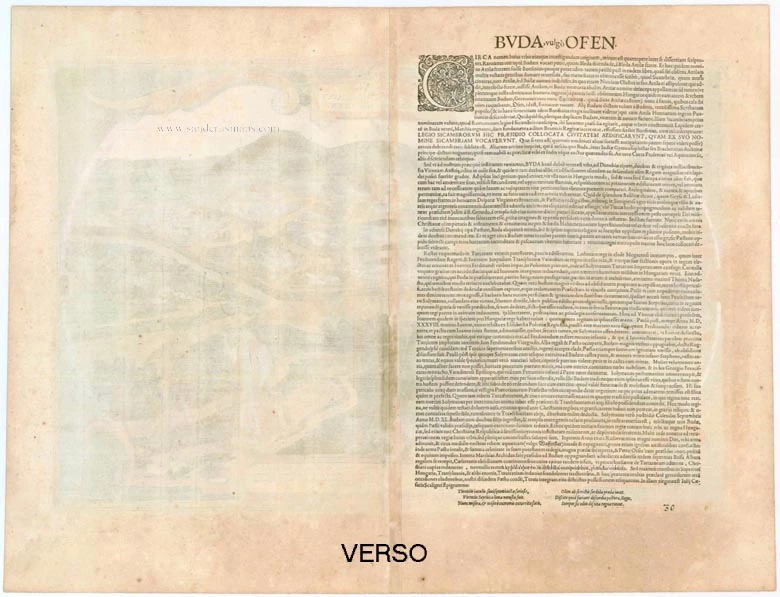Antique map of Hungary - Budapest by Braun & Hogenberg 1618
Buda Citerioris Hungariae Caput Regni avita sedes. vulgo Ofen
Item Number: 23435 Authenticity Guarantee
Category: Antique maps > Europe > Central Europe
Bird's-eye view of Budapest by G. Hoefnagel, 1617. Key to six locations.
TRANSLATION OF CARTOUCHE TEXT TOP: Buda, capital of Hungary and ancestral seat of the king, called Ofen in German.
CARTOUCHE BOTTOM: A. New outwork - B. Fortress and royal palace - C. Former church of the Holy Virgin, today a mosque - D. Vineyards - E. The Bassa of Buda - F. A barbaric tribe among the Turks, fearless and ready to commit any atrocity; they are commonly known as the Deli. They stick feathers through the skin on their heads, which makes them appear even more bloodthirsty. More can be read about them in the descriptions of the Turks by Johannes Lewenclavius.
COMMENTARY BY BRAUN: "The main church there was erected by Kings Géza and Ladislas in honour of the Mother of God [...]. Opposite the palace is a high hill on which the Turks today have a strong fortress and garrison. Formerly it was called St Gellert's Hill because a church was dedicated to him there, where pilgrims came in times of plague. [...] But at present nothing is to be found there except Mohammedan abominations. Opposite Buda, on the other side of the Danube, is Pest - also a free city, but somewhat smaller than Buda - in a flat, very fertile area with fine garden and meadows, such as are found in no other place. And it is a great pity that these two fine cities together with all the surrounding area have fallen into the hands of the Turkish archenemy."
This is a view from the east from a virtual elevated view point of the two cities of Pest and, on the opposite bank of the Danube, Buda, with the castle Hill and the palace. They are clearly in the hands of the Turks - Pest since 1526, Buda since 1541. This is indicated by the many mosques depicted in both cities. Towering above them all is the church of St Matthew (really the church of Our Lady, C), which is shown to have been converted into a mosque by the crescent on the tower and the dome. In the foreground, in turban and kaftan, is the Ottoman governor, the Pasha of Buda (E). Beside him, with a feather headdress, is a member of the Deli (F) - an Ottoman elite troop that was notorious for its cold-blooded slaughter, usually under the influence of drugs ( deli is Turkish for "lunatic", "reckless"). In 1686 Pest and Buda were reconquered by the Christians, in 1873 the two cities were united to form Budapest. (Taschen)
Date: 1618
First edition: 1617
Copper engraving
Size: 32 x 48.5cm (12.5 x 18.9 inches)
Verso text: Latin
Condition: Excellent, superb old colour.
Condition Rating: A+
References: Van der Krogt 4, 689; Taschen, Braun and Hogenberg, p.470.
From: Theatri praecipuarum Totius Mundi Urbium Liber Sextus Anno MDCXVIII. (Van der Krogt 4, 41:1.6)






